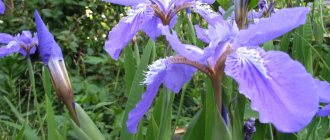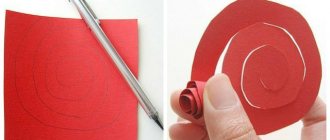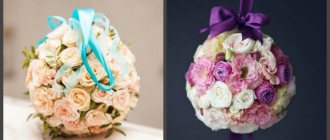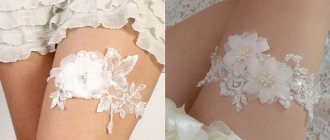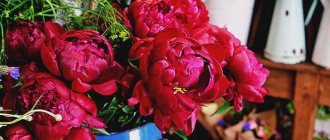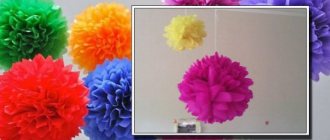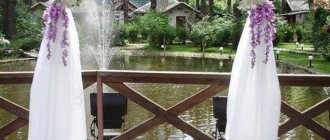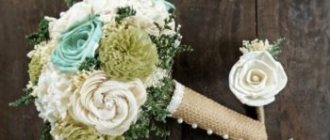What is the difference between a field bouquet and an ordinary one?
Today, flower boutiques and shops abound with flowers from huge greenhouses and foreign plantations. There are also wildflowers in the assortment of specialized stores, which are very loved by many representatives of the fair sex of different ages. However, a bouquet collected and composed independently can please you more than a purchased one.
Bouquets of wildflowers (photos eloquently prove this) differ from the usual ones, made up of garden crops or purchased greenhouse species. Wild-growing representatives of the flora are smaller in size, and their color is a richer palette of shades. The aroma of flowers collected with your own hands in the lap of nature is incomparable with the smell of pretentious bouquets of glamorous roses or orchids. It is as if shrouded in a veil of sunshine, filled with warmth and tenderness.
In addition, it is not at all necessary to have a special education as a florist in order to create a beautiful bouquet of wildflowers.
Several original compositions for summer
Many garden and wildflowers, unlike their greenhouse counterparts, quickly fade when cut. To prolong their life, you need to collect or buy plants in the morning, before the sun gets hot. Before placing in a vase, the stems are cut obliquely with sharp pruning shears and repeat the procedure every time the water is changed. The lower leaves must be removed immediately.
Poppies and spurges, often used in meadow floristry, secrete a poisonous milky sap; it is advisable to place them separately from other components of the arrangement. The proximity of sweet peas is no less destructive. Umbrella plants are completely harmless, but suffer from a hollow stem that does not absorb water well. It is recommended to insert cotton wool with a nutrient solution inside the “legs” so that they remain fresh longer.
Bouquets of wildflowers: photos
"Spikelets"
This fresh and original summer composition will delight you long after such welcome and gentle warm days have ended. The ears of rye used in it can be left when the flower part fades. And without any additions, the bright “sheaf” will look impressive, reminding you of summer every time.
You will need:
- rye ears;
- wild apple tree branches with fruits;
- officinalis;
- Tradescantia Ohio;
- raffia, scissors, pruning shears.
We strip the stems of the lower leaves, but do not shorten them, so that the bouquet turns out to be uneven in height and picturesque. We start with the ears. We collect a small bunch of several pieces, arranging them linearly. Next, we begin the classic spiral assembly, adding an apple tree branch.
We gradually introduce flowers, more bunches of ears of corn, and so on. When the composition becomes voluminous and heavy, so that it is difficult for the hand to hold it, we make the first bunch. We use raffia, not scotch tape, so as not to damage the stems and not disrupt the naturalness of the arrangement. Then we continue to add floral material. We rotate the composition all the time, distributing the components symmetrically. At the end we lower the flowers a little lower to add volume. When finished, tie the stems again with raffia and cut them to the same length.
The final photo of a beautiful field bouquet with ears of corn. It will look great by the window, as it has a clear and expressive silhouette.
Nest of daisies
Very simple and very summery. A frame of willow branches gives a simple composition of cornflower (garden daisies) a stylish and unusual look. Airiness and splendor are achieved due to the greenery of asparagus.
For the frame, you can buy a wire base at a florist store, and then attach willow branches to it yourself. It won't be difficult. Or purchase a ready-made rattan structure, it is almost identical to willow.
Step-by-step instruction:
- We start assembling with a large chamomile. Place it in the center of the frame and hold it with your hand so that it does not move. Next, take a sprig of asparagus.
- We continue assembling in a spiral, alternately adding chamomile and herbs.
- We fill the frame completely. We make sure that the “cap” of the bouquet remains round, but we place the flowers at different heights to give it a picturesque look.
- We fasten the stems on the back side of the frame with tape and cut them to the same length. Once again we tie everything together with the frame holder. We disguise the fastening with decorative jute.
A delicate summer bouquet is ready:
Garden composition in field style
A great example of using cultivated plants to imitate wild nature. It is important here to choose the right color scheme and texture of all components. In general, the impression of lightness, artlessness and freshness, characteristic of meadow bouquets, should be created.
You will need:
- bush roses;
- 2 types of chrysanthemums;
- astilbe;
- matthiol;
- waxflower;
- delphinium;
- pittosporum.
From branches of matthiola, astilbe and delphinium we form the center of the composition. We fix them with anchor tape or tape. Add the rest of the flowers in a spiral, arranging them in groups, in accordance with the latest floral trend. Roses with roses, chrysanthemums with chrysanthemums and so on.
The assemblage point can be raised higher to make the “head” of the arrangement more dense, or lowered lower, creating maximum volume. We periodically fasten the stems with an anchor so that they do not fall apart or change position. Astilbe gives the arrangement a fashionable “disheveled” look. Waxflower fills the voids between focal buds.
At the end we line the bottom with tlaspi greens for a neat look. We secure all the stems and cut them to the same length. It should be larger than a classic bouquet. We decorate the “handle” with linen braid and a lace cuff on top of it.
Master classes on making beautiful bouquets of wild flowers
One of the most important points in composing a bouquet of wildflowers is the selection of plants and materials.
It should be said that a good addition to such compositions can be:
- dried flowers;
- ears of cereals;
- feather grass panicles;
- conifer branches;
- burdock leaves;
- plantain;
- blueberry;
- greenery of ferns and daylilies;
- asparagus.
To create bouquets you may need:
- sharp scissors;
- pruner;
- wire cutters;
- oasis (special floral sponge);
- floral adhesive tape (elastic or paper);
- thin wire;
- twine;
- additional plant and decorative elements mentioned above.
A simple bouquet of lupins, buttercups and cress using spiral technique
When collecting flowers for a bouquet, you need to have a container of water with you so that the plants are well saturated with moisture and can be used further in work.
Tools and materials for decorating a bouquet:
- sprigs of purple lupins, yellow buttercups and cress;
- pruner;
- scissors;
- twine;
- decorative wide ribbon (braid).
Operating procedure:
- Strip the lower parts of the stems of flowers from leaves by ⅔ of the total length.
- Select a long buttercup branch and attach another 1-2 branches of colza to it at an angle, also at an angle.
- Place the lupine stem on top of the previous buttercup branches laid at an angle, gradually turning all the stems.
- The shorter stems of ranunculus and colza are placed lower (this gives depth to the bouquet), and dark lupins are placed higher in the bouquet.
- When laying each subsequent branch, you should set an even greater angle of inclination (this gives a more spherical shape to the bouquet)
- Place all prepared stems at an angle.
- Inspect the resulting bouquet and, if necessary, correct flower branches that are out of the composition.
- Tie twine around the stems at the junction in a spiral.
- Trim all stems with pruning shears.
- Wrap the tying area with decorative braid, cut at an angle of 45 degrees.
A simple beautiful bouquet of wild purple and yellow flowers is ready.
Bouquet of field daisies, speedwell, solidago and tlaspi
To work you will need:
- branches of field daisies (matricaria);
- paniculate bright blue and light blue twigs of speedwell (snake grass);
- bright yellow fluffy branches of solidago (common goldenrod);
- white long inflorescences of tlaspi (field grass);
- scissors and pruning shears;
- twine;
- decorative tape.
Operating procedure:
- Remove leaves from plant stems.
- Lay the longest stems of daisies and speedwells overlapping each other at an angle, gradually turning them in your hands.
- Next, gradually alternating, also lay yellow solidago panicles and white tlaspi inflorescences at an angle in descending order.
- By laying all the flower stems one by one, it is necessary to achieve a spherical shape of the bouquet.
- Straighten and trim branches and stems with pruning shears.
- Tie the bouquet with twine at the intersection of the stems.
- Wrap the bouquet with decorative ribbon over the binding.
A beautiful lush bouquet is ready.
Bouquet of tansy, cornflower and fern
To work you will need:
- cornflower flowers;
- sprigs of bright yellow tansy;
- branches of green fern;
- twine;
- scissors and pruning shears;
- decorative braid or ribbon.
Operating procedure:
- Remove leaves from flower stems.
- Overlap 3 branches of tansy at an angle. They will determine the height of the bouquet.
- Next, lay several more rows of tansy in the same way, turning them in your hand.
- Then add sprigs of bright blue cornflower, alternating them with tansy stems.
- Subsequent stems are shortened. The bouquet should be round and lush.
- Lastly, fern branches are woven into the bouquet. They are placed in the same way as the previous stems in a spiral and frame the entire bouquet.
- Tie the bouquet at the intersection of the stems with twine
- Trim the length of the branches with pruning shears.
- Decorate the attachment point with ribbon.
A bright and unusual bouquet is ready.
Rules for collecting wildflowers
Finding yourself in a beautifully flowering meadow, city residents can fall into euphoria from the natural splendor. But losing your head and thoughtlessly tearing up all the plants is unethical, and sometimes even illegal.
Red Book
The destruction of flowers listed in the Red Book is prohibited. These include:
- lilies of the valley;
- river water lilies;
- snowdrops;
- anemones;
- mouse hyacinths;
- forget-me-nots;
- wild tulips;
- goose onion.
Important! Each region has its own list of wild plants included in the register and under protection. To avoid being a poacher out of ignorance, it is better to familiarize yourself with it in advance.
Beware "neighbors"
Field cornflowers are frequent neighbors of wheat and rye crops. Trying to collect as many bright flowers as possible can cause large areas of the field to be trampled. Such destructive behavior is not only simply unsightly, but can result in a hefty fine from an environmental organization or the owner of the crops.
Bouquet “for an hour”
Some meadow plants are so delicate that they last only a few hours after being picked. The situation is also worsened by the fact that few people bother to take a container of water with them and place the plants there immediately after collection. Therefore, prolonged dehydration and being in warm hands kills flowers every second.
The most unstable include:
- red and white poppies;
- Umbrella hawksbills;
- yellow buttercups;
- blooming Sally.
Which plants are suitable and which are not?
Choose a plant with small petals or a dense core; they will last longer:
- cornflowers;
- chamomile;
- clover;
- bells;
- dandelions;
- irises;
- daisy.
Avoid collecting plants near busy highways for two reasons:
- Flowers growing along the road look faded due to the abundance of dust. They lack natural glossy shine.
- The concentration of dust and harmful substances from exhaust gases is harmful to health. The bouquet can become a source of exacerbation of allergic reactions or cause respiratory infections.
How to make a bouquet in a basket
Bouquets of wildflowers (photo below in the text) in baskets can be presented as a gift or used as interior decoration. They look very delicate and colorful, no worse than exquisite pompous bouquets of expensive flowers. It should be remembered that the shape of the bouquet must match the shape of the basket.
To create a composition of field daisies in a basket you will need:
- field daisies;
- sprigs of gypsophila;
- small bushy roses;
- oasis (floral sponge);
- a container of water to prepare the oasis;
- a round basket made of wicker of the required size;
- cellophane transparent;
- synthetic rope;
- scissors and pruning shears.
Operating procedure:
- Prepare gypsophila flowers and branches by cutting them to the desired length at an acute angle.
- Cut the floral sponge to the size of the basket.
- Place the finished oasis in a container on top of the water. You should wait until it is completely saturated with water on its own.
- Place cellophane film in the basket.
- Place the water-soaked oasis in the basket on the film.
- Trim off excess film.
- Secure the floral sponge by threading the string crosswise through the basket bars.
- Insert daisies over the entire surface of the oasis at an equal distance from each other. They should stand vertically in the center. In the direction from the center to the edges of the basket, the flowers are installed at an angle.
- Place roses separated from a single branch between the daisies.
- Insert sprigs of gypsophila along the edge of the oasis. They will hide the voids between the edge of the basket and the flowers, and also add tenderness and splendor to the bouquet.
Snowdrop
Snowdrop is a symbol of spring warmth and sun. Such a small snow-white one, with his appearance, seems to awaken everyone from their winter sleep. This is the earliest wildflower, because it appears at the end of winter, when there is still snow around.
Due to mass trade, the snowdrop is listed in the Red Book, as it is on the verge of extinction. People, let’s be more careful with nature and then we will be able to admire the snowdrop blooming every spring.
Gallery of beautiful photos of wildflowers.
Wildflowers are special flowers. They are not wild - they are free. Their aroma contains not only the delicate smell of pollen, but also the smell of the steppe wind, warm summer rain, and the smell of hot sun rays.
It is no better or worse than flowers from the garden or flower shop. Wildflowers are just different. A different scent and a completely different beauty. Let's watch.
Additional Tips
In order for the bouquets and flower arrangements you create to please you with their beauty and uniqueness, you should adhere to some rules and recommendations:
- Collecting wildflowers for bouquets should be done in the morning or evening, avoiding doing this in hot weather in the sun.
- To collect flowers and transport them, you should stock up on a container of water or a large piece of damp cloth for wrapping the cut plants.
- You should not pick flowers. They must be cut with pruning shears at an acute angle. This will help the plants absorb moisture better.
- You should not hold cut flowers in your hands. They will quickly wither from the living heat. It is better to wrap the stems with a bag or torn large leaves.
- When collecting wildflowers, it is better to immediately sort them by type and transport them separately, since some of them cannot live next to each other and accelerate the withering process.
- Flowers and plants with hollow stems do not absorb water well. To preserve their presentable appearance, you can insert a piece of cotton swab into the cut cavity on the stem. This will provide greater hydration and moisture saturation.
- Collected flowers and herbs should be cleared of leaves and thorns to avoid accelerating the putrefactive process in the bouquet, which will stand in a vessel with water.
- When preparing flowers for work, it is necessary to give them plenty of water.
- When working with an oasis (floral sponge), you should not move flowers from place to place several times. The holes in it will not be restored. A flower placed next to them will not hold up.
- When placing flowers in a basket, you should always focus on the center point. It determines the entire arrangement of the composition.
- In the center the flowers stand vertically. Closer to the edges they should be given a horizontal position.
- When placing flowers in an oasis, you should remember that the length of the cut stem should have a margin of 1.5 cm. It is to this depth that the flower will be inside the floral sponge to receive moisture and nutrition.
- When decorating a basket with flowers, you should periodically rotate it so that the composition is evenly distributed.
- To create bouquets of wildflowers, you should select vessels that match their size and design. The more magnificent the bouquet, the more modest the vase should be.
Beautifully and competently composed bouquets are always pleasing to the eye. And wildflowers look touching in any composition, even in photographs. Even if their lifespan outside of wildlife is short, they can give a lot of pleasant emotions, the smell of summer and a romantic mood.
Master classes on assembling meadow bouquets
Collecting flowers in a field is great, but it is unlikely to be a systematic composition, rather a natural armful. And if you first collect plants, and then, after some thought, arrange them into bouquets, you can achieve original solutions.
Field dried flowers
Over time, a composition of field plants will completely turn into a dry bouquet that will delight the eye for a long time. Stand on the dining table in the country or on the banquet table on the terrace.
For a simple rustic composition, we will collect the following plants:
- cereals;
- legumes;
- yellow St. John's wort;
- poppy boxes;
- needle-shaped dried flowers.
Materials and tools you will need:
- pruner;
- scissors;
- raffia for binding.
Step-by-step master class on assembling a field bouquet with dried flowers with step-by-step photographs:
Let's arrange the collected plants into groups: cereals, legumes, flowers and dried flowers.
We remove all the leaves and all the buds that have not faded from the branches of poppies. We divide the poppy stems into easy-to-use parts. So that they are even and do not move in different directions.
We will clear the stems of the remaining plants to the height where the place of the bunch will subsequently be located. The process is long, but it needs to be given special attention. If there are damp leaves left at the place of the bunch, the bouquet will freeze and rot.
Let's assemble a bouquet using the spiral technique. We place a second one on the central stem at an angle, then a third one. All plants “bend” in a spiral in one direction. Please note that we make the field bouquet slightly disheveled and free, in a vegetative, natural style. Meadow grasses and flowers in a tightly compressed composition look unnatural.
We decorate the assembled composition in a circle with low-growing cereal or herbaceous spikelets.
We tie it with raffia. We lay the coils tightly so that they hold the structure securely. We cut the grass stems with pruning shears to the same level.
A bouquet correctly assembled using the spiral technique, as seen in the photo, stands on the table without additional support.
White and green bouquet
The love for natural bouquets with a touch of rustic romanticism provokes florist designers to pay maximum attention to such compositions. Therefore, in the line of expensive bouquets of Dutch roses, East Asian chrysanthemums and African orchids, naive compositions in rustic, eco-style or boho style appear. Let's create a delicate summer bouquet in white and green tones. It can be collected from purchased plants, but it will be much brighter and more fragrant if you use wild flowers. Let's prepare:
- white tanacetum or small-flowered field chamomile 10-15 pcs.;
- tlaspia can be found in the field or planted in your garden flower bed 10-15 pieces;
- viburnum 8-12 pcs.;
- pink small-flowered bush carnation, its raspberry analogue is found in the meadow, 8-12 pcs.;
- feather grass of a natural grayish tint 10-15 pcs.;
- white twine;
- floral wire;
- green tape;
- scissors;
- pruner
Let's put together a summer composition for a gift to a romantic person:
Let's arrange the plants and tools on the table so that it is convenient to work with them. We will remove excess foliage from the plants. Let's divide it into convenient inflorescences, so that they then fit comfortably in the hand and do not stand out from the overall composition.
Before starting assembly, let's prepare the feather grass. The grass is very lush, but has a short stem. To raise it to the same level as other herbs, we will use the taping technique. We apply feather grass to the floral wire. We wrap it with adhesive tape. We use green, so it will merge with other plants and will not stand out as spots from the general background.
Let's start decorating the bouquet with tanacetum, which resembles a small-flowered white chamomile bush. We place the tlaspia in a spiral. The next element is also at an angle and in the same direction - viburnum. Add a sprig of pink carnations. The last element is half-prepared feather grass. We place its air fragments between the flowers. Comb with your fingers and give the effect of a lush cloud.
We repeat the spiral assembly of all plants. With feather grass we constantly repeat the described procedure.
We tie the bouquet with white twine. We trim the stems.
Bouquet "Makoveychik"
According to legend, the “makoveychik” is consecrated in churches in the summer on the honey holiday, on the feast of the Holy Great Martyr Makovey. According to legend, the bouquet should consist of 17 herbs. Plants vary depending on the geographic area of residence. Most often, medicinal herbs are used, so after consecration in the church they can be taken out of the bouquet and used for their intended purpose. Or you can dry it and leave it standing assembled. You will need the following tools, flowers and herbs:
- scotch;
- green strong threads;
- scissors;
- red polyester ribbon, you can use satin;
- small sunflower;
- cereal ears of wheat, rye and oats;
- immortelle;
- tansy;
- lavender;
- yarrow;
- oregano;
- dry poppy boxes;
- branches with viburnum berries;
- yellow calendula;
- basil sprigs;
- wild and peppermint;
- marigold;
- sagebrush;
- evergreen periwinkle leaves.
Instructions for assembling a bouquet of wild and garden flowers:
- We start the assembly with the central sunflower. In the composition it symbolizes the sun. We will assemble a pyramidal composition around its stem.
- We place grain ears in a circle. We tie them to the sunflower stem with thread. Cereals are necessary to attract wealth, health, and abundance into the home.
- Next row: dried flowers of immortelle and yarrow. Yarrow can then be used in the fight against gastrointestinal disorders and diseases. We fix it with thread.
- We apply yellow tansy a little lower. Decoctions of this medicinal herb are effective for gastritis and liver diseases.
- On top of the tansy is a row of purple lavender mixed with oregano. Oregano is boiled to normalize sleep, as a sedative and analgesic.
- Next we place dry poppy boxes on the stems in a circle. These are the main attributes of the “makoveychik” bouquet.
- We supplement the composition with branches of viburnum, as an attribute of girlish beauty, and basil, to attract good luck and success.
- The next level of the bouquet is marigolds, yellow calendula. A decoction of them has antiseptic properties.
- Add wild and peppermint, which can also be used for medicinal purposes or as a tonic drink. Add bitter wormwood nearby. Secure with thread.
- Nearby below we add marigolds to the bouquet. After consecration, they are used in decoctions as an antiseptic.
- We complete the composition with a row of evergreen leaves. We tie it with thread. Trim the stems with scissors or pruning shears. Decorate with red ribbon. We glue the edge of the tape with tape.
For more information about assembling a bouquet of medicinal herbs and flowers, see the YouTube channel:
How to do it yourself?
This question is quite complex, since the process largely depends on the plants available . Below are two options for compositions - based on summer meadow flowers (partially cultivated) and using ears of corn.
The first master class shows the spiral technique . In fact, the bouquet is collected from the middle, from the tallest plants. It is not necessary to arrange all the flowers sequentially - first some, then others, others... they can be alternated.
Basic principle : plants are gradually added to the initial two to five branches, gradually reducing the height of the composition and taking care that the flowers do not interfere with each other. The ends of the stems are trimmed after the final assembly and fastening of the branches.
